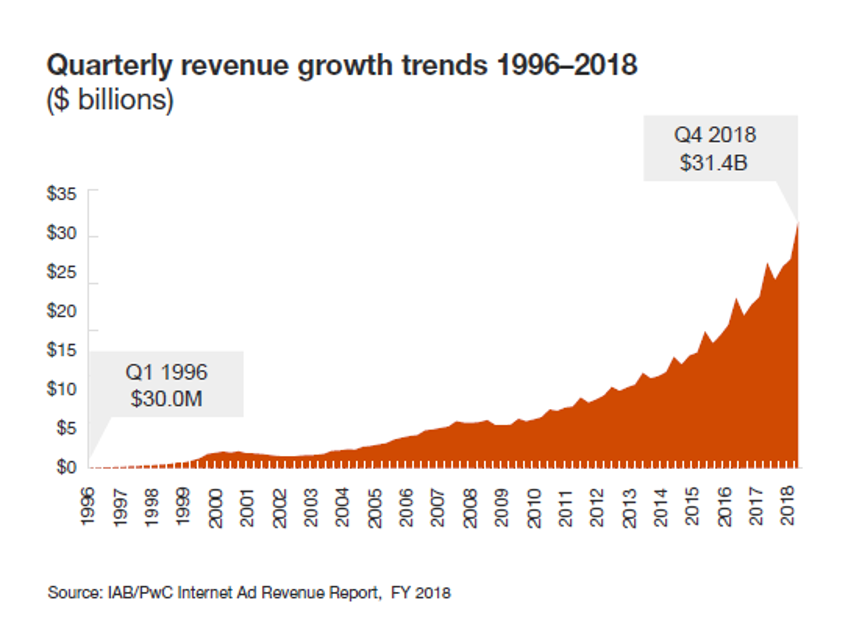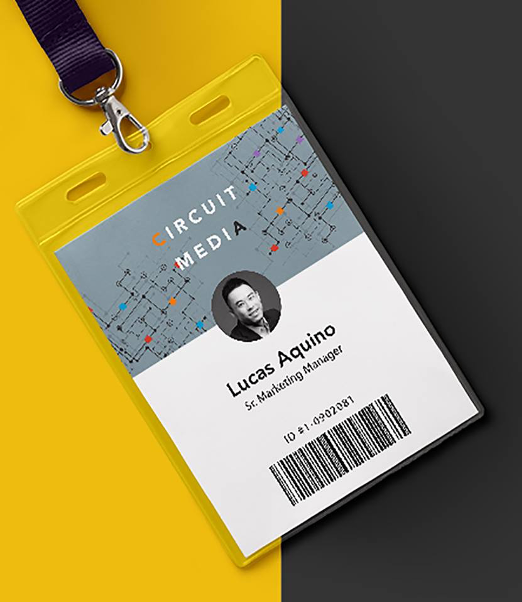How to Design a Name Tag to Represent Your Brand

How to Design a Name Tag to Represent Your Brand
Contributed ContentDesigning a professional and artistic name tag can set you apart from competitors. Take a look at how to create a name tag that will accurately represent your brand.
The tangible aspects of marketing still matter even in the digital age. Build trust, establish your agency identity, and showcase your creativity by designing name tags with intention. U.S. digital advertising revenue was over $100 billion in 2018, according to the IAB Internet Advertising Revenue Report. As seen in the graph below, advertising revenue continues to grow in 2019.

Quarter 1 revenue already increased by 18 percent this year, bringing in an impressive $28.4 billion. Agencies must not only keep the pace of emerging trends, but also sustain relationships with clients found through search.
To stand out, agencies need to deliver to every business that hires them. One of the ways to help increase conversion after lead generation forms are filled out is by making the right impression when clients meet for face-to-face conversation.
One element which can create a singular impression is a classic name tag. Name tags can be designed to show off your agency brand, design capacity, trustworthiness, expertise, and accountability. With intentional name tag design choices, you can maintain the sophisticated brand of your agency.
Let your company aesthetic guide you in creating a visual extension of your brand. Choices like materials, color, size, backing, custom text, and corners work together to introduce new clients to your company culture. Make sure your marketing efforts extend past the mobile screen right to client meetings.
6 Tips & Tricks for Creating a Successful Brand Name Tag
- Think about customer service
- Put your brand on display
- Design with intention
- Provide insight into your company culture
- Build trust
- Showcase expertise
1. Think About Customer Service
The conversion funnel is vital to a company’s success. As seen in the image below, it is the step-by-step process of converting a customer into a final sale.

Leveraging the basic steps within a conversion funnel makes it easier to convert leads, if you’re using the right customer service approach. While foot-traffic is low in the funnel, it can be a make or break moment for establishing relationships with corporate executives, marketing directors or other points of contact. You can do more than tailoring a contract to meet their needs: You can look the part.
This is especially critical when clients get to that point where they want to transition from hiring your company for their social media presence to using the comprehensive services you offer. The in-person meeting is crucial for selling more of your marketing services. Your work attire should be a part of your marketing strategy.
2. Put Your Brand on Display
Many name tag designs include space for a distinct company logo. Remind visitors that you are representing the brand that they recognize from your website. A website logo sets the tone and draws attention to each website’s header. In the example below, the name tag showcases important details about the individual and business.

Along with the name of their business that’s in a bold typeface, the company website is also detailed on the name tag. No matter what page visitors go to on a site, the logo is there, creating a unified experience. Wearing the same logo is a reminder of your digital expertise. If your agency provides the best in web design and site architecture, people will know that from your name tag. In a client consultation, keep the same reminder there. Your business has an online presence and a physical presence.
It’s one way to set your business apart from other agencies clients may be shopping.
3. Design With Intention
A logo is one element of your name tag design. Choose a background that gives a chosen distinct impression. Brushed gold and silver name tags can indicate a higher level of professionalism. Vibrant colorful backgrounds can communicate a playful or creative tone. Basic white and black backgrounds keep the focus on any text or logos.
Depending on the vertical you work in, you can tailor the design of your name tag to the types of businesses you most often encounter. Many agencies have a primary service or area of expertise that attracts clients. Let that skill direct the color choice, layout and even fonts chosen for your name tags.
4. Provide Insight About Your Company Culture
The style of name tag you choose lets visitors know more about your company culture. Different name tags communicate different messages.

Distinguish yourself as a company. You can include an inspirational slogan, an accolade, a brand promise or other message. Including custom text on a name tag provides a visual reminder that a company plans to deliver.
5. Build Trust
Name tags create transparency. Agency guests quickly see who they are working with and what their role is. It is a subtle way to communicate that their brand will be safe with your agency.
Let the agency experience you provide be a demonstration of what you offer to clients. Show that you are trustworthy. Industries across the board are searching for advertising that makes online visitors feel safe. Your agency’s reach should include a secure consumer experience for web visitors and office visitors.
For example, one service you may provide clients is migrating sites from http to https. The sites you optimize and build for clients should give consumers a safe buying experience. In the same way, when clients come to your business, you want them to have a safe buying experience – to know who they are working with and that their brand is in good hands.
6. Showcase Your Expertise
Name tags help clients quickly identify specialists. You can demonstrate your agency value to a client by introducing the specialists that work for your agency. Create badges with job titles for everyone in your business. You can designate your marketing, technology, and sales teams. In the badge below, the employee showcases his job title in a simple font.

The employee at Circuit Media is a senior marketing manager, which implies expertise within his field. Within the teams, you can use another text line to designate job roles. Include the title for each developer, designer, product team member, search engine optimization specialist, customer service representatives, and department directors.
Each name tag demonstrates how comprehensive your services are. Clients can immediately see where your company invests resources, giving them more insight into your services.
Design a Name Tag That Rivals Your Competition
Staying competitive in this thriving industry means that agencies have more pressure to deliver the best services to clients. Failing to maintain client relationships means that your agency can get buried in the rankings too.
With bad Google reviews and low ratings, your own website’s relevance will falter. Invest in establishing long-term clients by using name tags to make every customer touch point count.
Wearing a distinguishing name tag shows that you will be accountable for everyone who walks in your door seeking marketing services. Clients can see and remember the names of the people they most enjoy working with as well as which specialist will be responsible for fulfillment.
Your conversations with clients who take the time to visit your office are critical – especially when it comes to the high spend clients that will be giving your agency access to their live sites. Each moment spent with clients demonstrates that you offer more than other marketing companies. You provide a first-class agency experience.
